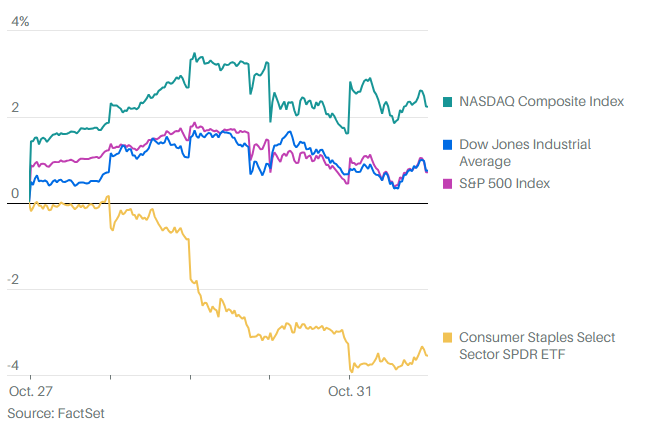
PARENTS ARE SETTING THEMSELVES UP TO FAIL
We are scheduled to have a retirement crisis.
FROM THE BLEACHERS, VOL. 15
MARKET UPDATE
The S&P 500 rose 0.5% on the week to 2907.41 on light volume. The index is now less than 1% away from its September 21 record high. The major market narratives seem to be trade talks with China and the Federal Reserve taking rate hikes off the table for 2019. More specifically, investors are expecting some favorable resolution to the China trade talks, which will avoid any escalation of tariffs, and perhaps even put a comprehensive trade agreement in place between the U.S. and China. As well, the Federal Reserve narrative is about an FOMC on hold and poised to reduce Quantitative Tightening. (The Fed is currently shrinking the Fed balance sheet by $50 billion monthly.) Disappointments on either front could lead to selling that good snowball into a correction, or worse.
Meanwhile, bonds and stocks continue to disagree on where the economy is going in 2019. Bond yields have bounced a bit but are still well below where they were last fall. Of course, stocks are up some 24.5% from their December lows and 16% on the year. Looking underneath the hood, it’s evident that equity investors are expecting a rebound in economic growth. To wit: consumer discretionary stocks are outperforming consumer staples, high beta (economically sensitive) stocks are outperforming less volatile stocks, industrial and semiconductor stocks are leading the market, and there has been an improvement in auto stocks, all according to Strategas’s technical strategy team. (Strategas is an institutional brokerage and advisory firm serving clients in more than twenty countries around the world.) As well, the Atlanta Fed’s GDPNow estimate for the first quarter was raised to 2.3% on April 8 from 2.1%. On the other hand, the International Monetary Fund (IMF) is siding with lower bond yields as it reduced its 2019 global growth forecast to 3.3% from 3.5% in January – which was down from 3.7% in October.
We are still waiting, as we have been all year, to see whether bonds or stocks are right and whether we’re already in a bear market or not.
RETIREMENT PLANNING - PARENTS ARE SETTING THEMSELVES UP TO FAIL
Parents are spending $500 billion a year supporting their adult children, more than twice the amount they are saving for retirement annually, according to a recent Barron’s article. We are scheduled to have a retirement crisis in the next few decades, according to numerous researchers who study demographics and savings trends in the United States. Spending money on adult children rather than saving for retirement is only exacerbating what already promises to be a difficult situation for many Americans as they age.
Some numbers to highlight the difficult position many people are in when it comes to readying themselves for retirement:
- The National Institute on Retirement Security estimates that more than 100 million working-age individuals (57 percent) do not own any retirement account assets nor are they covered by a traditional defined benefit plan.
- The median retirement account balance is $0 among all working individuals, while the average account balance for those workers with retirement savings is only $40,000.
- Seventy seven percent of Americans fall short of conservative retirement savings targets for their age and income based on working until age 67.
Furthermore, more retirees are failing to pay off debt before they collect their last paycheck. Of those ages 65 to 74, 70% have debt; 39% of it housing-related - double the amount for that age group in 1992, according to the Employee Benefit Research Institute. Spending on adult children is still rising and will only make matters worse for already strapped parents trying to save enough for a successful retirement. For instance, according to the Pew Research Institute about 15% of 25- to 35-year-olds were living at home in 2016. That’s five percentage points higher than the share of Generation Xers living at home when they were the same age, and almost double the share of today’s older retirees who were in the same situation years ago.
It’s understandable that parents want to help their children and grandchildren, but much like on an airplane when the oxygen masks drop, they need to help themselves first.
Regards,
Christopher R Norwood, CFA
Chief Market Strategist











